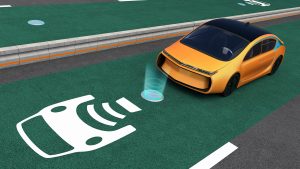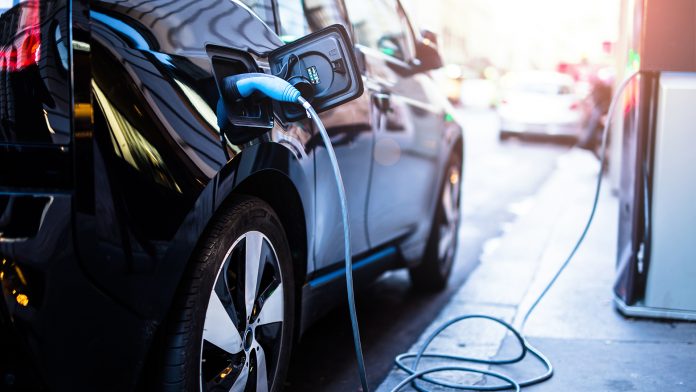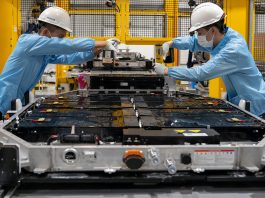Andy Attfield, Associate at Reddie & Grose LLP, discusses the current electric vehicle (EV) market landscape and looks at the technological developments that could have the power to push electric vehicle charging forwards and become the driving force behind several other industries.
As a member of the Reddie & Grose LLP electric and autonomous vehicles team within the electronics, electrical devices, and software practice group, Andy has handled patents relating to various technologies in the electric vehicle market. These include vehicle software, electrical motors, and battery systems.
Electric vehicles have come a long way since their first designs back in the 1830s when they were used as London Taxis. While making an electric motor is seemingly straightforward, powering one is proving not to be quite so simple.
As the popularity of electric vehicles continues to gather speed and more and more commercially available electric vehicles enter the market, there are still some issues around EV charging; particularly on a long journey, but that may be about to shift up a gear.
The current EV market landscape
One major problem facing the growing EV market is the range of electric vehicles, or how many miles an EV can travel before needing to be charged. While, due to improvements in battery technology and car design and efficiency, some electric cars now have ranges well over 300 miles, comparable with the range of their internal combustion (IC) cousins, they often come at the cost of a much higher cost than petrol or diesel cars.
Factoring this additional time into their day is often not an option for many drivers, and it requires a change in behaviour that can take some getting used to. Planning a journey based on how long your battery will last and then factoring in charge times is a new concept that can take some time to get your head around.
Fast chargers for electric vehicles go some way to overcoming this problem. Still, they only work with cool batteries, which in the real world usually limits the use of fast chargers to once per journey, so still not an ideal solution.
These reasons make many drivers hesitant to switch lanes and opt for an electric vehicle. While this isn’t necessarily a deal breaker for a driver who primarily only travels short distances and can charge their electric vehicle at home between uses, others who cover many miles per year and would rely on charging their vehicle at motorway service stations may be deterred.

So, despite dramatic improvements, the range of electric vehicles is still putting the brakes on this growing market and preventing it from entering the fast lane.
But with the automotive world accelerating their electrification plans with many major car manufacturers such as Jaguar, Mercedes-Benz and Alfa Romeo committing to only developing electric cars very shortly, improvements to EV charging and the EV infrastructure are needed.
As more and more drivers adopt electric cars in the coming years, the demand for efficient charging will continually grow. It is a factor that cannot be ignored if electric vehicles are to become the future of our transport.
Another related problem is that while drivers can refill the petrol tank in their IC car in minutes and then continue their journey, electric vehicles typically take substantially longer to charge.
Could electric vehicle charging advancements be on the horizon?
Advances recently published in the journal Nature are mapping the route towards a potential solution to electric vehicle charging issues.
In 2017, Stanford University researchers Shanhui Fan and Sid Assaworrarit’s paper demonstrated how wireless charging technologies could be applied to objects in motion.
A second paper shows that this concept could be developed to power electric vehicles. If this technology could power EVs, it could prove to be a game changer in the world of EV charging.
In this second paper, Fan and Assaworrarit demonstrated that relatively high power could be transmitted over an extensive range of distances of up to 65cm while maintaining over 90% power transmittance efficiency.
While the 10W that Fan and Assaworrarit were able to transmit over this distance is far from the power required by an electric vehicle (10W is around the power used to charge mobile phones wirelessly), the authors state that it should be possible for their method to be scaled up to the kilowatt or even hundreds of kilowatt level.
This makes it a potentially perfect solution to overcome the hurdles of electric vehicle charging.
Coupled with the fact that the wireless power transmission only takes a few milliseconds, a charging system built to these specifications could be more than ample to power today’s electric vehicles.
Given that electric vehicles will only get more efficient as further developments are made, it could also provide a long-term solution to our transport needs and a much needed boost to our electric vehicle charging infrastructure.
Leveraging wireless charging to transform other industries
Powering electric cars and lorries on the go isn’t the only application for this technology. In the near term, one of the most promising applications of wireless charging on the go would be to power the many thousands of robots operating in warehouses worldwide across various industries.
For example, the supermarket delivery company Ocado has successfully leveraged technology and their IP in their high-tech, robo-staffed warehouses. On-the-go electric vehicle charging could enable Ocado to make their warehouses even more efficient by reducing the need for robots to stop work to recharge temporarily.

Wireless on-the-go charging could also reduce the number of robots necessary to complete orders, free up warehouse space currently taken up by charging points, and eliminate wasted time travelling between the warehouse floor and the charging locations.
These factors would deliver massive productivity gains and ultimately help them streamline their processes, limit their overheads, and boost their profits.
It is clear that this new invention has many applications and could prove to be a driving technology in the continued electrification of our world. Suppose the inventors can prove their theory and their method can be scaled up to the kilowatt or even hundreds of kilowatt levels. In that case, it has the potential to shape our future and transform a wide range of industries and markets, including the EV market.
If the inventors seek to commercialise their invention, obtaining patent protection would be crucial.
Such protection would allow them to be behind the wheel regarding who uses their invention – they could implement it themselves, license it to others, or sell the rights to use it completely.
Given the potentially broad range of applications in many different industries, a comprehensive licensing regime could be a lucrative route.
However, given that patent applications take 18 months to publish, we will have to wait and see whether the inventors have decided to capitalise on their ideas and whether this innovative technological advancement will revolutionise EV charging worldwide.









